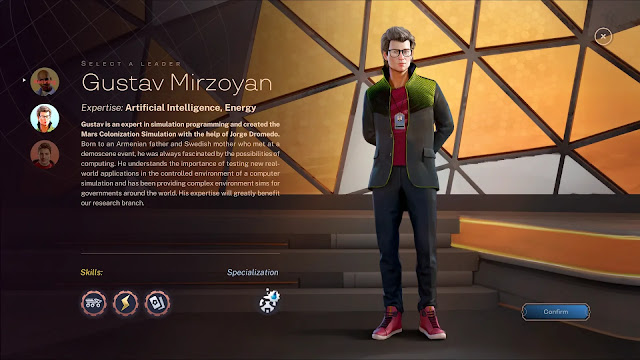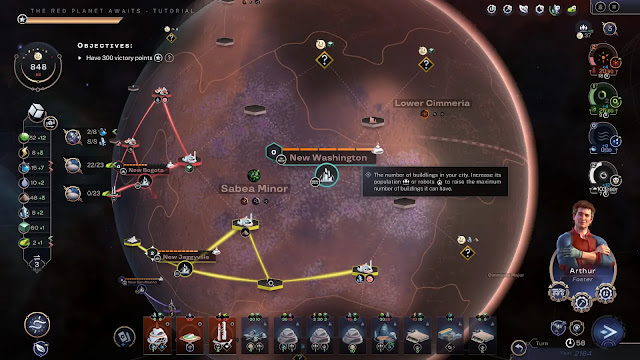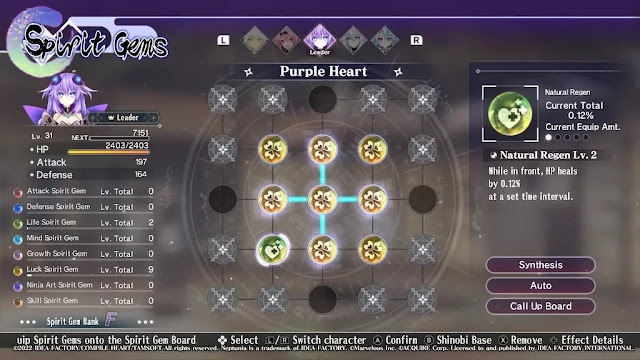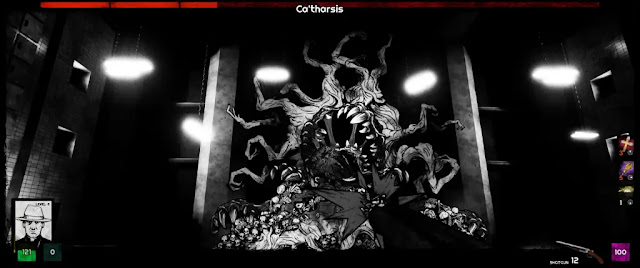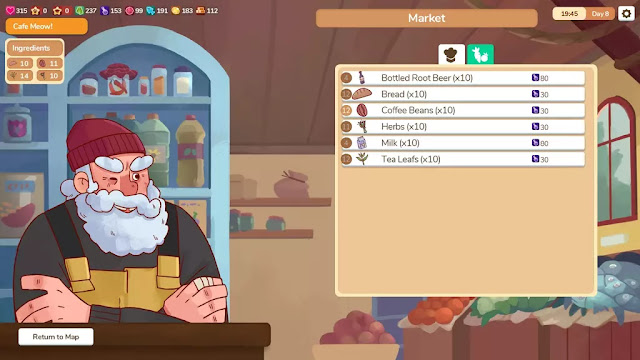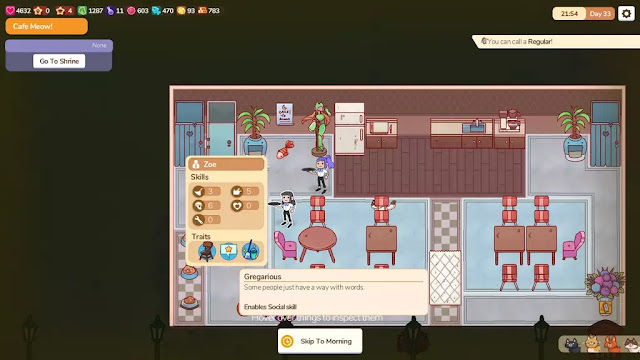Scarlet Nexus by developer and publisher
Bandai Namco
Entertainment—
Sony PlayStation 4 review written by
Richard
with a purchased copy.
Estimated reading time: 10 minutes
By this point I'm sure some of you have
heard of Scarlet Nexus, whether it be the anime or the game. A story about
using mind over matter, quite literally, in order to fend off monsters and
protect humanity. Scarlet Nexus released back in the summer of 2021, so if
you're seeing it go on sale and wondering if you should pick it up, or just
getting back into the scene after things are settling down, here's a review of
Scarlet Nexus for PS4.
Scarlet Nexus is a 3D action JRPG set in
a world where the Earth is beset by creatures called Others, strange
organic/machine hybrid monsters who's goal seems to be the death of animals and
humans, with a particular interest in eating their brains. In this world,
humanity has developed a weapon against the Others in the form of psychic
powers, and created the Other Suppression Force, or OSF, in order to combat the
menace. The OSF consists of those showing great promise with their psychic
powers, and members are given age suppressing drugs in order to keep them in
their prime. The members of the OSF are sent on missions to eliminate Others,
and have developed a number of tools to help them do so.

The world setting is pretty interesting,
as there are cities with advanced technology using images sent directly to the
brain. In fact, there is a big emphasis on what the brain can do, as many of
the aspects of city life can only be interacted with neurologically. Add to
this the Others which eat human brains, and there is an interesting backdrop.
The Others themselves are kind of like mutated animals, which drop out of the
extinction belt, a sort of "not-quite-asteroid" belt that encircles
the Earth. Others can range in size from roughly human height to towering
monstrosities. Scarlet Nexus focuses on a platoon of the OSF and their struggles
in this monster infested world.
Upon starting a new game, you get the
option of choosing between Yuito, the melee focused character, or Kasane, the
psionic focused character. Their stories happen parallel to each other, and you
can start a new game plus as the other character after clearing the game, so no
worries about missing anything. I'd personally suggest playing as Kasane, as I
felt her playstyle, and storyline, were more engaging. Both Yuito and Kasane
are new recruits to the OSF, having just had their SAS brain tentacles
installed recently. Unfortunately for them, right after their acceptance but
before they actually start in their new position, the city is attacked by
Others. So begins Yuito and Kasane's journey to uncover conspiracies, destroy
Others, and protect the people they care about.
Scarlet Nexus takes place in two teams,
one for Yuito and one for Kasane. Before the game really takes off, you sort of
have a bit of a trial mode to test out some other character abilities before
the teams are split. The game takes place in chapters, where you will go out
and perform your story based missions during, and then intermissions between
chapters, where you can have bonding episodes with your party members or take
on side quests. Interestingly enough, you can still interact through the other
character's team through bonding episodes throughout the game. There are a few
unique areas you can only access as one team or the other, but most are mutual,
although maybe in a different order.

Your intermissions will be where you can
bond with your teammates, give them gifts, as well as accept bonus sidequests.
Sidequests are a bit of a weird affair, as you can accept them from townsfolk,
but you can turn them in as soon as you complete them, from anywhere you want.
Sidequests aren't your standard "go here, collect X, defeat Y" type
of sidequests either. Maybe one or two are, but the vast majority of sidequests
are surprisingly complicated, such as "defeat Y enemy using Z type of move",
which is a lot harder than you generally see, and a nice way of getting you
more familiar with combat.
Gameplay has a large focus on movement
and combat, which will be in a 3D action style as you explore the terrain of
the areas you are sent to. Each area will have Others pop up as you roam
around, as well as items to pick up, which may come as consumables or
"data" which can be used for the equivalent of crafting or to turn in
for side quests. You can run, jump, and perform a little dash, two jumps if you
purchase an upgrade. If you spot some Others, you will enter combat.
Battle is a very interesting experience,
actually. Your team, which consists of two other members you can bring with
you, will also help out. While you have your normal attacks and a dodge, each
main character also has a special move, a sword spin for Yuito and a backstep
with her blades. Both special moves restore a larger portion of the psy gauge.
This gauge is a measure of your psionic powers, and decreases with use. Amongst
the terrain, there will be both special items as well as miscellaneous items.
You can use your psionics to throw the items at your enemies. This is Kasane's
main focus, while Yuito has a more physical persuasion.

Enemies can also throw stuff at you, and
if you dodge close enough to the projectiles, you can whip them back at the
enemies. You also have more tools at your disposal to deal with enemies, such
as a sort of overlimit that lasts for a while and improves your abilities, a
combo attack where you can summon your allies to attack enemies with you, the
ability to use your friends psychic powers, a sort of "synchro mode",
and a special field mode. There's a lot to unpack there, so let's start with
the basic points first. All your allies have different powers, which you can
use for a period of time. You can upgrade this ability later to increase the
number you can use at the same time. These abilities can range from
Hypervelocity, which increases your speed, or Duplication, which increases the
number of items you throw as you throw them. Every power is unique, and each
ability granted is also different.
Brain drive is the overlimit mode that
increases your stats, and once you get your bond level high enough you can use
the summon ability for your teammates. Brain Field is the ability to sort of
amp up your overlimit. The area around you gets turned into a weird trippy
field, and your move-set is sort of adjusted and stuff. Enemies also have a
sort of guard gauge, and if you deplete it you can either instant kill common
enemies, or deal heavy damage to bosses. With all of these options, as well as
a bunch of items you can use to top your health up and stuff, you have a really
wide range of options to choose from. Add into this that you can usually
replace your party members at will, and it give a nice variety to your combat
experience.
Here is usually where I start to talk
about the soundtrack and art direction, but I'd like to take a few moments to
talk about some things first. First of all, the dodge mechanic is…a little
awkward. It's closer to a dash than a dodge, and while it normally works ok, it
can feel really clunky at times. Secondly, I'd like to complain a bit about the
difference between Yuito and Kasane. Early game, I'd say Yuito is easy to
handle early game, while late and end game I found Kasane a lot easier to use.
I'll use the last boss as a reference, but I finished my first run as Kasane at
level 63, and the last boss was challenging but not too bad. End of the second
run with Yuito, new game plus carrying over levels, ended at level 80, and the
last boss was a bit of a struggle even while using better equipment. Personal
preference maybe, but I found Kasane's psionics to be a lot stronger and easier
to use later in the game. Each character also gets a Brain Map, which is an
upgrade grid. You earn points when you level, and different abilities cost
different points to acquire.

I do have to say, my absolute favourite
part of Scarlet Nexus is the characters. They are all unique with different
personalities, except maybe Yuito who is fairly typical anime protagonist, but
every group needs at least one of those. All the characters have their own
unique powers to match their personalities, even if it may not seem as such at
a glance, and throughout the course of the game you really do get to see them
come to terms with their flaws, and come out as better people for the
experience. I may not like real people, but I certainly liked the party members
in Scarlet Nexus a whole lot.
A nice additional tidbit is that any
gifts that are given actually get added to your base that you use between
missions. Give a character some snacks, and those will appear on a table
nearby. There is also an option for exchanging items at the local save
points/shops which I found entertaining. It's mostly traditional item crafting,
in a sense, but a lot of items are cosmetics that you can slap on your
characters, which WILL appear in both cutscenes and battles.
Now we can talk a bit about the art
direction and musical choices. First up, the art style. Cut scenes are really
interesting, as they are either animated 3D cutscenes, or they are done in a
sort of animated comic-book style, which is a more unique way of display. The
characters are still displayed as their 3D models, but you get a red frame
border, and the view shifts and such, it's just a really nice way of doing
things. As I mentioned earlier, cosmetics are also shown in the cutscenes,
which is a really nice feature. Enemy designs are really cool, and I thought
they did a really good job of both the area designs as well as the enemy
designs.
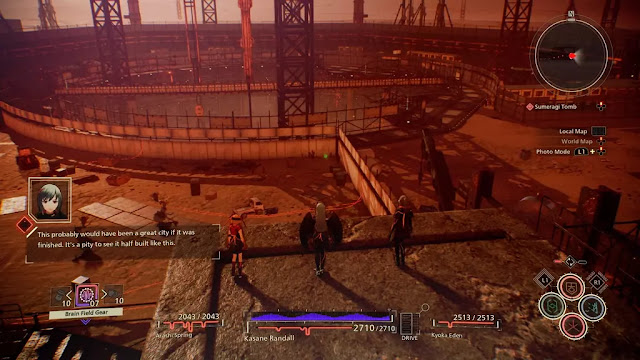
As for the soundtrack, there are some
really interesting pieces in there. Any battle themes with the Others usually
have this weird clash and distortion style, with a dubstep like back-beat,
maybe with a base/drum beat, but there are usually some really discordant
vibes. This matches well with the organic/mechanical hybrid nature of the
others, and the tracks were pretty catchy. When not in battle, the music tended
to either be upbeat and jazzy for more relaxing scenes, tense when preparing
for departure on a mission, or exciting and action like if in a battle or
something similar is happening.
I have to say, I feel as if Scarlet Nexus
got a lot less attention than it should have. While there were some areas where
the enemies made me want to rage at something, and occasionally the camera was
a struggle to control, I largely had an extremely enjoyable time with Scarlet
Nexus. Was it perfect? Definitely not, but it was really fun, and after
completing both storylines and getting the platinum trophy, I can honestly say
it was a great ride.
Summary
Overall, Scarlet Nexus has a lot of
aspects to draw you in: an engaging storyline, unique and dynamic characters, a
great soundtrack, and a surprisingly in-depth battle system. While sometimes
feeling a little clunky during the movement or combat, Scarlet Nexus does a
really good job of drawing you into the world.
Score: 8
/ 10






.jpg)




















